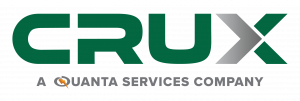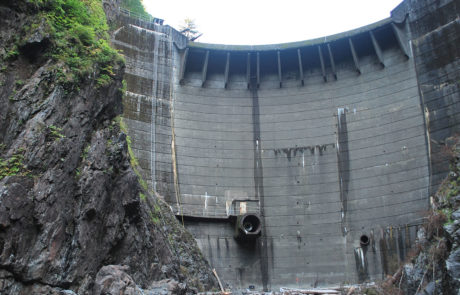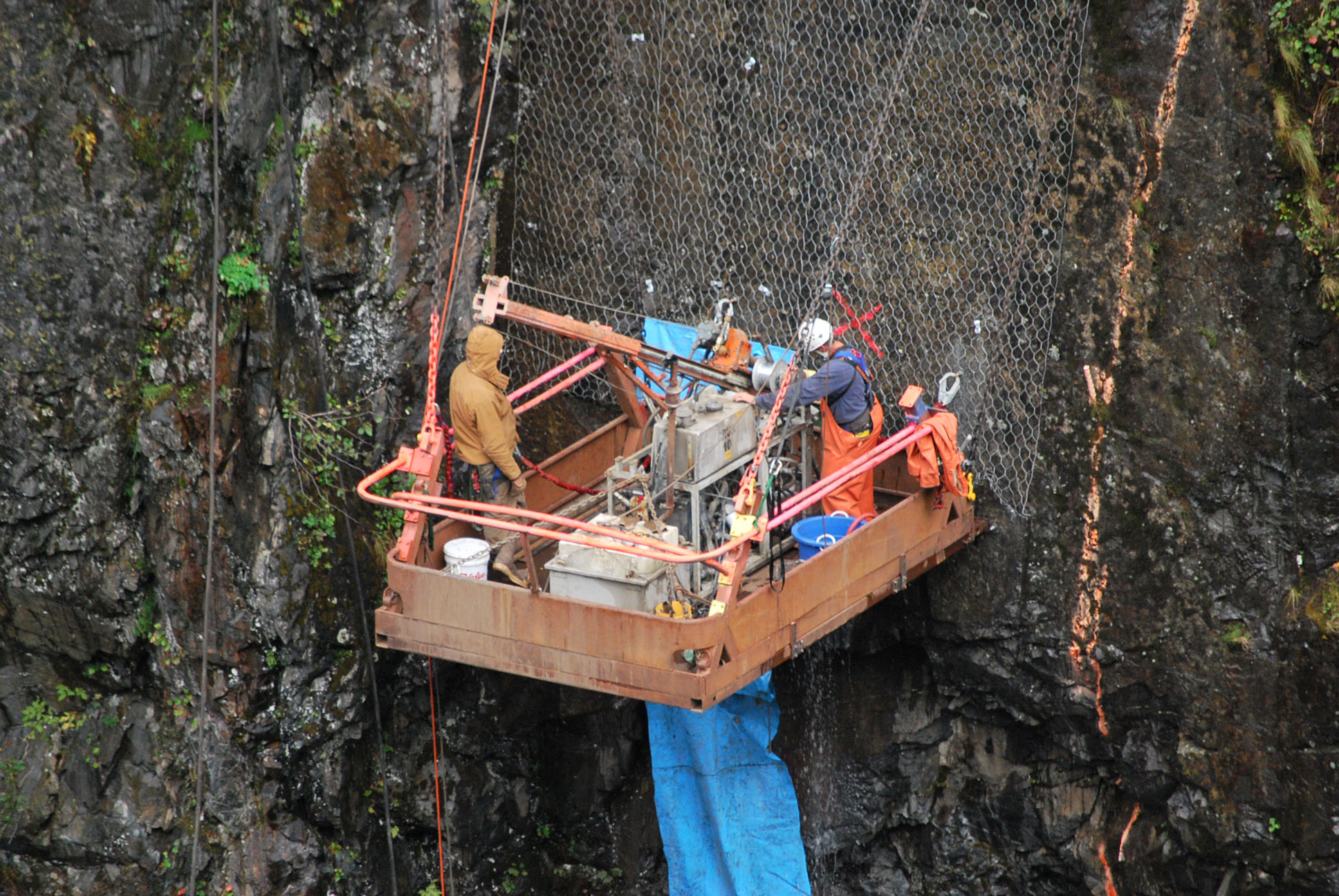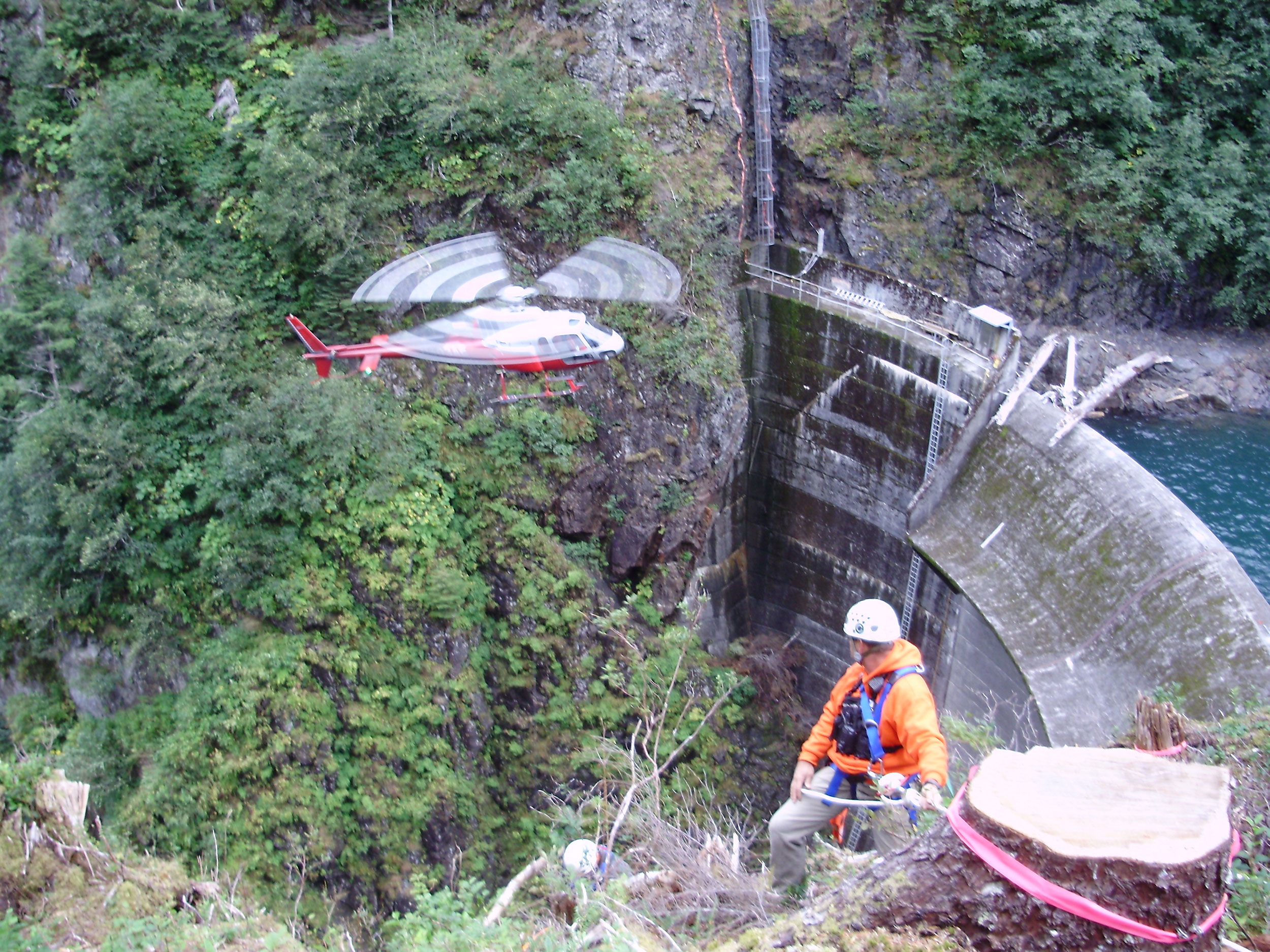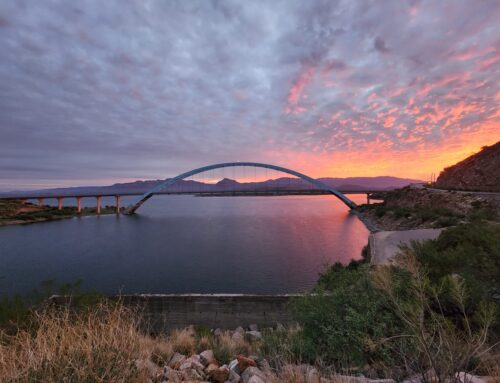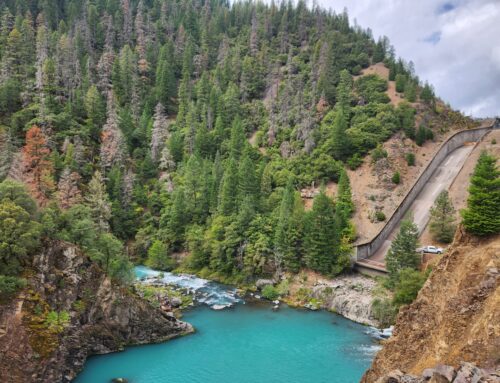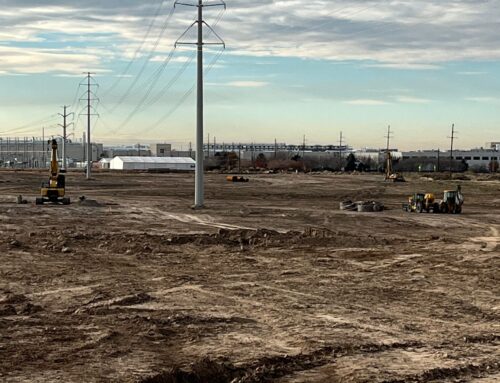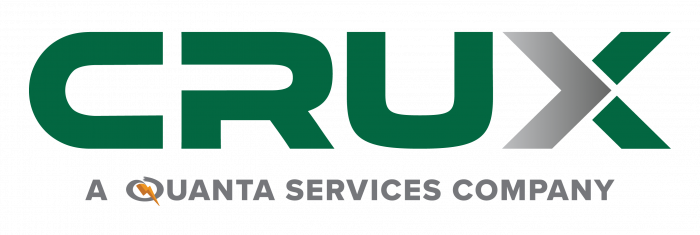
Helicopter Supported Exploration Drilling
An increase in demand for renewable energy in Sitka, Alaska led the investigation of potentially expanding the Blue Lake Project. Current resources were being exhausted and hydroelectric generation was operating at 96 percent capacity. The proposed expansion includes the addition of a third generating turbine near one of the existing powerhouses, and raising the dam by as much as 83 feet. Once completed, these two measures are expected to increase the system’s annual energy output by close to 30%.
Team Members
City and Borough of Sitka
Hatch Associates Consultants
Crux Subsurface
Temsco Helicopters
Crux’s Role
Crux provided geotechnical drilling and sampling to aid in the design phase of the expansion project. This included drilling fifteen boreholes, eight of which utilized standard track vehicle access, and seven of which required helicopter-supported drilling.
One of the helicopter borings was located on a vertical cliff face and required innovative access methods. Crux utilized helicopter drilling techniques to install four rock anchors above the boring location, and secured a suspended certified engineered drill platform to these anchors. Equipment was then transported by helicopter to the platform.
Crux performed packer testing in the borings and provided the client with downhole feature orientation using our in-house Crux Oriented Borehole Logging (COBL) services. COBL utilizes high resolution optical and acoustical probes to obtain images of the borehole wall, providing wrapped and unwrapped 360 degree views of the borehole as well as strike dip information of fractures.
Crux introduced two key alternatives to original project specifications that provided the owner with significant benefits. The first was to provide a contract helicopter, effectively eliminating potential project delays associated with helicopter mobilization from Juneau to the project site. Having a responsive onsite helicopter in the event of an injury also increased overall project safety. The second alternative was the use of COBL for obtaining downhole feature orientation in place of the specified Ballmark system. The use of down hole televiewer systems are less labor intensive, provide a significant amount of data, and eliminate the human error associated with field personnel handling marked core, all of which provides the client with higher quality data.
